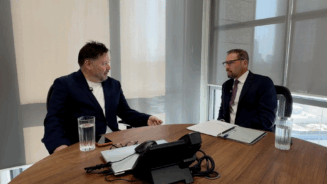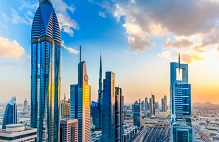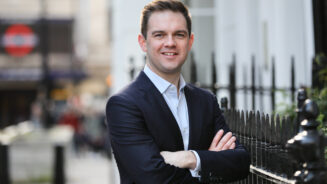He became head of MENA Equities in 2008. He describes this as a “baptism of fire”, despite his experience of the Asian financial crisis in the late 1990s, a period that informs the way in which he looks at stocks.
As an analyst, he and his team focus on what drives a company’s earnings. He asks: “Are they realistic numbers that the market is expecting? Is the balance sheet stretched, is it going to have keep funding that growth with more borrowings?”
Spring in the step
He says the 2008-09 crisis hit the UAE pretty hard, and it took a relatively long time to recover. In 2011, while the Arab Spring proved challenging for some countries, especially in North Africa, the Gulf countries were well insulated. Lee admits he made “some pretty good money” during this period.
“We saw this clearly in Saudi and the UAE, even in countries such as Oman. With Egypt, even though they had two years or so working through issues of leadership, once that was settled, if you look at the earnings for the Egyptian companies, a lot of them are even stronger than they were pre-Arab Spring.”
During the Arab Spring period, and between October and the early part of December last year, his weighting in cash grew as high as 15% for the Emirates MENA Top Companies Fund.
Currently, the cash position is between 6-7%, which he says is on the defensive. “If we were more aggressive, we would be something like 2-3% cash only.
“We want some dry powder if markets give us the opportunity to add on to stocks. We have also become more defensive in our stock picks. We are far more diversified now in the number of stocks than we used to be.
“If we were bullish we used to be 3-4% overweight on the stock. We are now at the stage where, if we are bullish on something, we are probably around 2% overweight. We are not taking such concentrated calls any more on one particular idea.”
Oil slicker
This has translated into a rise in the number of holdings for the fund, going from the high forties a year ago, to 59 in May, up to 62 in July.
“We have spread our calls a little thinner, taking the view that the markets have to adjust to the change in oil prices.
“I think we will eventually see 70 holdings again, probably at the end of this year, or in early 2016.
“We could see oil prices go back up. Of course, one character that could spoil the story now is Iran. If sanctions are lifted, we could see a decent amount of extra oil, which could go back to the markets, so that could add some headwind to oil prices going up.”
Returning to the prospects of the Saudi market, one of the requirements for its entry to the MSCI index is that it must have an index that foreign investors can easily replicate.
“I am not so concerned about the liquidity of the market. In the summer lull it is a bit lower but, on average days, we are talking about $2bn traded value. That is pretty significant, more than Turkey, so I think if foreigners want to get in, it wouldn’t be a problem in terms of liquidity.”
Wei Lee points to some really large-cap companies in there, such as SABIC, which is one of the world’s key manufacturers of chemicals, fertilisers, plastics and metals.
SABIC, which in market share is somewhere between the size of BASF and Dow Chemical, is the top holding in the fund.




